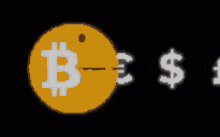Posted on February 13, 2025
Digicash: Pioneering Digital Currency History

Digicash was one of the earliest attempts to create a form of digital currency, pioneered by David Chaum, a cryptographer and computer scientist, in the 1980s and 1990s. Here’s a brief history:
-
Foundation and Concept (1980s): David Chaum introduced the concept of digital cash while he was a student at the University of California, Berkeley. His idea was to create an electronic payment system that would offer the privacy and security of physical cash. In 1982, he published “Blind Signatures for Untraceable Payments,” laying the groundwork for what would become digicash.
-
Digicash Company Formation (1989): Chaum founded DigiCash, Inc., in Amsterdam. The company aimed to develop and commercialize his digital currency system.
-
ecash (1990s): The product that came out of this initiative was called “ecash.” It was designed to be an anonymous, untraceable electronic payment system. Ecash was based on cryptographic protocols, ensuring that transactions could be conducted with a high level of privacy. Users would load money onto a smart card or software wallet, and then spend this digital money online without revealing their identity to merchants or banks.
-
Implementation and Partnerships: In the mid-1990s, Digicash secured partnerships with banks like Mark Twain Bank in the U.S. for trials of ecash. This allowed users to open digital accounts, deposit money, and use ecash for online purchases. However, the system required both merchants and consumers to adopt the ecash software, which was a significant barrier to widespread adoption.
-
Challenges and Decline: Despite initial enthusiasm, ecash faced numerous challenges:
-
Adoption: Getting both merchants and consumers to use ecash was tough. The internet was still in its infancy, and electronic payment systems were not yet mainstream.
-
Competition: Traditional credit card companies and emerging payment solutions like PayPal began to overshadow ecash, offering simpler solutions without the privacy focus.
-
Technical and Operational Issues: The infrastructure needed for ecash was complex, requiring banks to integrate new technology, which was cumbersome and expensive.
-
-
Bankruptcy (1998): By 1998, due to lack of market penetration and operational costs, DigiCash filed for bankruptcy. David Chaum moved on to other ventures, but the failure of Digicash was a significant lesson in the challenges of introducing digital currencies.
-
Legacy: Although Digicash itself didn’t survive, its concepts were influential. The ideas of privacy in digital transactions, cryptographic security for payments, and the foundational work on digital currencies influenced later developments like Bitcoin and other cryptocurrencies. Chaum’s work highlighted the potential and pitfalls of digital currencies, paving the way for future innovations in the field.
In summary, Digicash’s history is a tale of early innovation in digital currency, aimed at providing privacy and security in online transactions, which, despite its ultimate failure, contributed significantly to the evolution of electronic payment systems.





 Bitcoin
Bitcoin  Ethereum
Ethereum  Tether
Tether  XRP
XRP  Dogecoin
Dogecoin  Bitcoin Cash
Bitcoin Cash  Monero
Monero  Zcash
Zcash  Litecoin
Litecoin  Solana
Solana  PAX Gold
PAX Gold